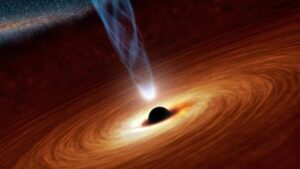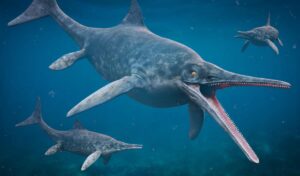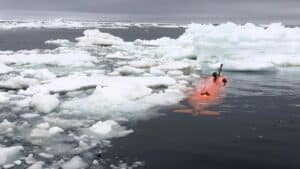A silent revolution has just shaken the world of astronomy. Matteo Paz, an American high school student, has accomplished what thousands of seasoned scientists had failed to do: detect 1.5 million previously invisible space objects. This extraordinary discovery is not a stroke of luck, but the result of an innovative approach combining passion, top-tier mentorship, and artificial intelligence.
Artificial Intelligence Revolutionizes Space Observation
In the summer of 2022, a young prodigy joined the prestigious Planet Finder Academy program at Caltech. His challenge was monumental: to harness the massive datasets from NASA’s NEOWISE telescope. This satellite, initially designed to track asteroids threatening our planet, also captured thermal signals from distant objects that were often overlooked.
Faced with this mountain of untapped data, Matteo developed a groundbreaking solution. In just six weeks, this passionate student created a machine learning algorithm capable of analyzing complex astronomical data with unprecedented precision.
“I mapped the invisible,” the young man simply explains to describe his innovative method. His approach transcends traditional observation techniques. The algorithm he developed detects subtle changes in brightness and automatically classifies discoveries, opening fascinating new perspectives on the evolution of celestial bodies.
The applications of this technology go far beyond astronomy. Paz’s time series analysis model has remarkable potential in several fields:
- Financial analysis to detect hidden market trends
- Environmental research to study pollution cycles
- Advanced meteorology and climate forecasting
- Anomaly detection in big data
It’s staring right at us: AI reveals the Milky Way’s supermassive black hole is aimed directly at Earth
In China, a mountain range disappears under a sea of solar panels – creating the largest photovoltaic landscape ever deployed in the world
Scientific Mentorship as a Catalyst for Innovation
This major discovery perfectly illustrates the importance of high-quality scientific mentorship. Professor Andrew Howard, director of the Planet Finder Academy program, created a privileged learning environment for these young talents. His initiative allows high school students to access equipment and knowledge usually reserved for experienced researchers.
Davy Kirkpatrick, Paz’s lead mentor, played a key role in this success. His personal journey resonates with that of his protégé: originally from a small farming town in Tennessee, he himself had once benefited from the encouragement of a visionary teacher. This experience inspired him to pass on his knowledge with a method that is both rigorous and inspiring.
The mentor-student relationship catalyzed the young astronomer’s creative potential. Kirkpatrick guided Paz in exploring the fundamentals of astrophysics while giving him the freedom to develop his own intuitions. This educational approach exceeded all expectations.
Project Timeline
| Project Phase | Duration | Results |
|---|---|---|
| Program Integration | 2 weeks | Familiarization with NEOWISE data |
| Algorithm Development | 6 weeks | Creation of functional AI model |
| Testing Phase | 3 months | Identification of 1.5 million objects |
At 11 years old, she discovers a giant marine reptile that had been sleeping beneath our feet for 200 million years
They dumped 200,000 radioactive barrels into the Atlantic: French researchers launch an unprecedented mission to track them down
A Discovery That Transforms Our View of the Cosmos
Perhaps the most fascinating part of this story is the reaction from NASA scientists. “It was right there in front of our eyes,” said a NEOWISE program official, stunned by the results achieved by the young prodigy. These space objects had been hidden in the data for years, simply waiting for a different approach to be revealed.
The complete catalog of these discoveries will be published in 2025, promising exciting new insights into our cosmos. Astronomers worldwide eagerly await the opportunity to explore this new celestial map that could revolutionize our understanding of the universe.
Today, Matteo Paz is passing on his knowledge by becoming a mentor himself for other high school students passionate about astronomy. This virtuous cycle shows how high-quality training combined with tailored mentorship can lead to major scientific breakthroughs—even from very young researchers.
The incredible journey of this American student perfectly illustrates how scientific passion, paired with emerging technologies, can transform our understanding of the world. An inspiring lesson that reminds us the greatest discoveries often arise from a fresh look at existing data.







